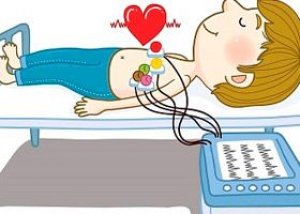
All iLive content is medically reviewed or fact checked to ensure as much factual accuracy as possible.
We have strict sourcing guidelines and only link to reputable media sites, academic research institutions and, whenever possible, medically peer reviewed studies. Note that the numbers in parentheses ([1], [2], etc.) are clickable links to these studies.
If you feel that any of our content is inaccurate, out-of-date, or otherwise questionable, please select it and press Ctrl + Enter.
Sinus node weakness syndrome
Medical expert of the article
Last reviewed: 07.07.2025

Sinus node dysfunction (sick sinus syndrome) results in conditions in which the atrial pulse rate does not meet physiological needs. Symptoms may be minimal or include weakness, palpitations, and syncope. Diagnosis is based on ECG data. Patients with clinical symptoms require implantation of an artificial pacemaker.
Sinus node dysfunction (sick sinus syndrome) includes marked sinus bradycardia, intermittent sinus bradycardia and atrial tachyarrhythmias (bradycardia-tachycardia syndrome), sinus arrest or pause, and transient sinoatrial block. Sinus dysfunction occurs predominantly in the elderly, especially those with other heart diseases or diabetes.
A sinus pause is a temporary weakening of its activity, which is manifested on the electrocardiogram by the disappearance of teeth for several seconds or minutes. A pause usually provokes escape activity of the pacemakers located below (for example, atrial or nodal rhythm), which allows maintaining the heart rhythm and functioning of the heart, but long pauses lead to dizziness and syncope.
When transient sinus-atrial block develops, the sinus node is depolarized, but impulse conduction to the atrial tissue is impaired. With first-degree sinus-atrial block, sinus node impulses slow down, and ECG data remain normal.
- In type 1 degree (Wencke-bach periodicity) of sinoatrial block, the impulse conduction slows down to its block. This is recorded on the electrocardiogram as a progressive lengthening of the P-P interval, to a failure of the R wave, leading to a pause and the appearance of group contractions. The duration of the pause is less than two P-P intervals.
- In type 2 sinus-atrial block, impulse conduction is blocked without preliminary prolongation of the interval, which leads to the appearance of a pause, the duration of which is several times (usually 2 times) longer than the duration of the P-P interval, and group contractions.
- At the 3rd degree of sinus-atrial block, conduction is completely blocked. There are no teeth, which reflects the cessation of the sinus node.
The most common cause of sinus node dysfunction is idiopathic sinus node fibrosis, which may be associated with degeneration of the underlying conduction system. Other causes include drug effects, excessive vagal hypertonicity, and a variety of ischemic, inflammatory, and infiltrative changes.
Symptoms of Sick Sinus Syndrome
Many patients have no clinical manifestations, but depending on the heart rate, all the signs of brady- and tachycardia may appear. A slow irregular pulse indicates this diagnosis, which is confirmed by ECG data, pulsometry, or 24-hour ECG monitoring. Some patients develop AF, and the underlying sinus node dysfunction is detected only after sinus rhythm is restored.
Where does it hurt?
What do need to examine?
How to examine?
Who to contact?
Prognosis and treatment of sick sinus syndrome
The prognosis is ambiguous. Without treatment, mortality is 2% per year, mainly due to primary organic heart disease. Every year, 5% of patients develop AF, a risk factor for heart failure and stroke.
Treatment involves implantation of an artificial pacemaker. The risk of AF is significantly reduced with the use of physiological pacemakers (atrial or atrioventricular) compared with the use of ventricular pacemakers. Antiarrhythmic drugs can prevent the development of paroxysmal tachycardias after pacemaker implantation. Theophylline and hydralazine are agents that increase heart rate in young patients with bradycardia without syncope.

